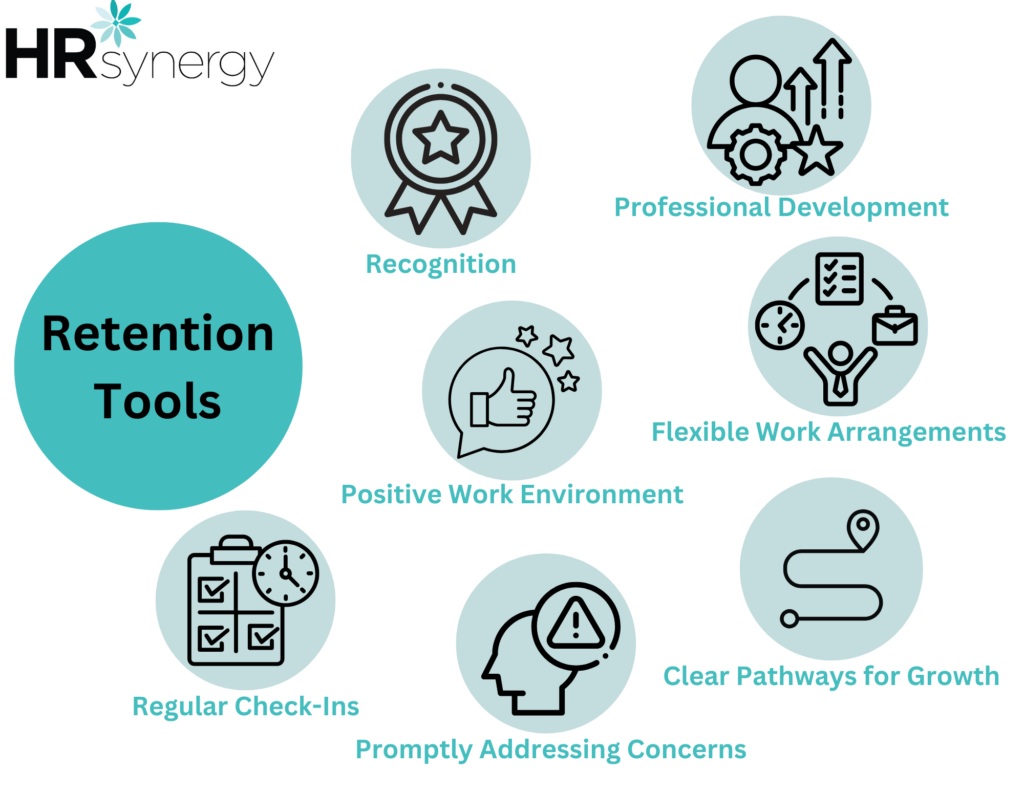Retention: Keeping Employees Engaged
In today’s fast-paced work environment, retaining talented employees is one of the top challenges for many companies. High turnover can disrupt workflow, decrease morale, and result in costly recruitment and onboarding processes. Employee retention is a continuous cycle of engagement and support—a process that benefits not only individual employees but also the organization as a whole. A stable workforce, where employees are engaged and fulfilled, is ultimately more productive and committed to the company’s vision. Here, we’ll explore key strategies for keeping employees engaged to build and maintain a strong, committed workforce.
Engagement is the cornerstone of employee retention. Engaged employees are those who feel valued, challenged, and connected to their work, which leads to greater job satisfaction. When employees are actively engaged in their roles, they’re not just clocking in hours—they’re invested in their work and willing to go the extra mile.
Growth is an essential part of feeling engaged in one’s career. Offering employees opportunities to learn and develop skills is one of the best ways to keep them fulfilled. This could be in the form of attending workshops, online training, or even mentorship programs within the company. Investing in professional development demonstrates that the organization is invested in its employees’ long-term success.
Recognizing employees for their hard work is a powerful motivator. It doesn’t have to be an elaborate award ceremony; simple acts like acknowledging achievements in team meetings, sending a thank-you email, or spotlighting employee successes on internal platforms can make a big difference. Feeling seen and appreciated contributes to an employee’s sense of value within the organization.
Culture plays a significant role in employee retention. When the work environment is positive, employees feel motivated to be there every day. A positive work culture encourages open communication, collaboration, and mutual respect. It also involves leaders who are approachable, empathetic, and responsive. Making space for team-building activities, inclusive practices, and open-door policies can foster a culture of trust and support.
Flexibility has become one of the most sought-after benefits. Offering flexible hours, hybrid work options, or even remote work opportunities where possible can boost employee satisfaction. Flexibility helps employees balance their personal lives with professional commitments, which can reduce burnout and increase engagement.
A stable workforce is one where employees feel a sense of security and loyalty. Retention strategies that keep employees engaged create stability within the organization, which directly impacts productivity and reduces the need for frequent hiring. To achieve a stable, engaged workforce, companies need to proactively address employee concerns and demonstrate their commitment to their teams.
Regular one-on-one meetings with employees can help managers identify potential issues before they lead to turnover. During these check-ins, managers should ask employees about their career goals, listen to any challenges they’re facing, and find ways to offer support. Consistent communication helps employees feel comfortable voicing concerns and also gives managers insights into the employee experience.
Ignoring or delaying responses to employee concerns can erode trust. When issues arise, they should be addressed as soon as possible. Whether it’s about workload, interpersonal challenges, or personal matters, a timely response shows employees that their well-being matters.
Stagnation can be a major factor in why employees look elsewhere for work. Providing clear advancement paths within the organization can help employees see a future with the company. This may involve mapping out possible career steps, implementing succession planning, and offering skills development programs that prepare employees for promotions and new responsibilities.
Employee retention is not a one-time action but a continuous journey of engagement and development. It’s about creating a workplace that values its employees, listens to their needs, and provides the tools and resources to support their growth. In doing so, companies not only retain top talent but also cultivate a team of motivated, fulfilled employees who are aligned with the organization’s goals.
When employees feel engaged, valued, and fulfilled, they are more likely to stay long-term. And with a stable, productive workforce, companies can redirect time and resources that would have been spent on recruitment into innovation, growth, and further enhancing the employee experience.
Retaining employees starts with an investment in their experience—a focus on creating an environment where they can thrive. So, if you’re looking to improve employee retention, start by looking at your organization’s engagement strategies and asking, “Are we meeting our employees’ needs?”
By fostering a culture that prioritizes growth, recognition, and fulfillment, companies can reduce turnover and build a lasting, loyal team ready to face the challenges of tomorrow.
Offboarding next month…
Read more from our THE EMPLOYEE LIFE CYCLE:

